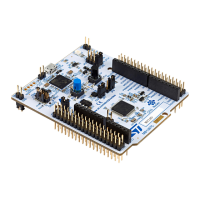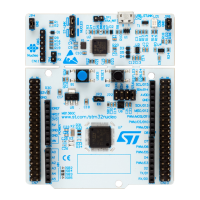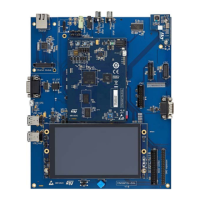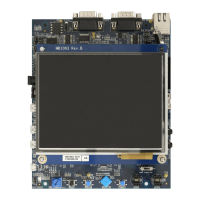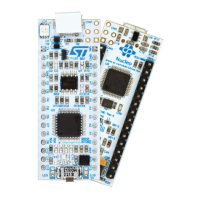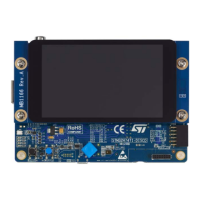UM2324 Rev 4 23/43
UM2324 Hardware layout and configuration
42
1. Connect jumper JP2 between pins 3 and 4 for VIN or pins 5 and 6 for E5V,
2. Connect the external power source to VIN or E5V,
3. Power ON the external power supply 7 V < VIN < 12 V to VIN, or 5 V for E5V,
4. Check that the green LED LD3 is turned ON,
5. Connect the PC to the CN2 USB connector.
If this sequence is not respected, the board may be powered by VBUS first from the ST-
LINK, with the following risks:
• If more than 500 mA current is needed by the board, the PC may be damaged or the
current supplied may be limited by the PC. As a consequence, the board is not
powered correctly.
• 500 mA is requested at the enumeration (since SB15 must be OFF): this request is
rejectable and the enumeration does not succeed if the PC does not provide such
current, consequently, the board is not power supplied (LED LD3 remains OFF).
6.7 OSC clock sources
Three clock sources are listed below:
• LSE which is the 32.768 kHz crystal for the STM32 embedded RTC
• MCO which is the 8 MHz clock from the ST-LINK MCU for the STM32 microcontroller
• HSE which is the 8 MHz oscillator for the STM32 microcontroller. This clock is not
implemented on the STM32 Nucleo-64 board
6.7.1 LSE: OSC 32 kHz clock supply
There are three ways to configure the pins corresponding to the low-speed clock (LSE):
1. LSE on-board X2 crystal (Default configuration). Refer to crystal design guide for
STM8S, STM8A, and STM32 microcontrollers application note (AN2867) for crystal
design guide for STM32 microcontrollers. It is recommended to use NX3215SA
manufactured by NDK (32.768
kHz, 6 pF, 20 ppm).
2. Oscillator from external to PC14 input: from external oscillator through pin 25 of the
CN7 connector. The following configuration is needed:
–SB23 ON
– R31 and R32 removed
3. LSE not used: PC14 and PC15 are used as GPIOs instead of low-speed clocks.
The following configuration is needed:
– SB23 and SB24 ON
– R31 and R32 removed
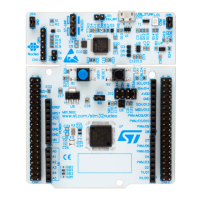
